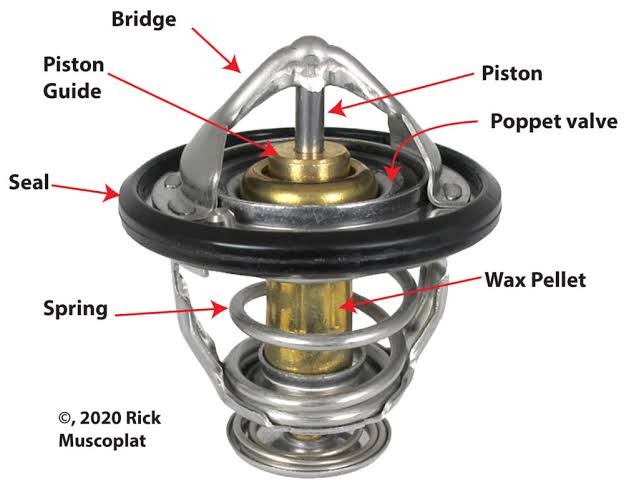The engine thermostat is a small yet vital component located between the engine and the radiator. It acts as a temperature-sensitive valve that controls the flow of coolant between the engine and the radiator to regulate the engine's operating temperature.
In the realm of automotive engineering, the engine thermostat plays a crucial role in maintaining optimal engine temperature and ensuring efficient engine performance. In this comprehensive guide, we will delve deep into the functionality, components, importance, common issues, and maintenance of engine thermostats.
How Does the Engine Thermostat Work?
When the engine is cold, the thermostat remains closed, preventing the flow of coolant to the radiator. This action enables the engine to reach its operating temperature quickly. Once the engine reaches the desired temperature, the thermostat opens, allowing the coolant to flow through the radiator, where it dissipates heat, maintaining the engine at its optimal temperature.
Parts of an Engine Thermostat
- Valve: The primary component that regulates the coolant flow by opening and closing based on temperature changes.
- Bypass Valve: Allows a small amount of coolant to circulate even when the thermostat is closed, ensuring the engine doesn't get too cold.
- Spring: Provides tension for the valve to open and close at specific temperatures.
- Wax Pellet or Sensor Bulb: The temperature-sensitive element that reacts to changes in engine temperature.
Importance of the Engine Thermostat
The engine thermostat plays a critical role in engine performance and longevity. By regulating the engine's operating temperature, it ensures that the engine runs efficiently, reducing wear and tear on engine components and improving fuel efficiency.
Common Issues with Engine Thermostats
- Stuck Closed: If the thermostat fails in a closed position, it can lead to overheating as coolant cannot flow to the radiator.
- Stuck Open: A thermostat stuck open can cause the engine to take longer to reach its optimal operating temperature, leading to reduced fuel efficiency and increased emissions.
- Thermostat Failure: Over time, the thermostat's components may wear out, leading to inaccurate temperature regulation.
Symptoms of a Faulty Engine Thermostat
- Engine Overheating: One of the most common signs of a faulty thermostat is engine overheating, indicating that the valve is stuck closed.
- Low Engine Temperature: A constantly low engine temperature may signify a thermostat stuck open, causing reduced fuel efficiency.
- Fluctuating Temperature Gauge: If the temperature gauge rapidly fluctuates, it could indicate a failing thermostat.
Troubleshooting and Repair
- Coolant Inspection: Check the coolant level and quality for any signs of contamination or debris.
- Thermostat Testing: Test the thermostat's opening and closing at different temperatures using a hot water bath and a thermometer.
- Replacement: If the thermostat is faulty, replace it with a high-quality, compatible part.
Frequently Asked Questions
Can a Faulty Thermostat Damage My Engine?
Yes, a malfunctioning thermostat can cause engine overheating, leading to potential engine damage if not addressed promptly.
How Often Should I Replace the Thermostat?
As a preventive maintenance measure, consider replacing the thermostat every 50,000 to 100,000 miles or as recommended by your vehicle's manufacturer.
Can I Drive with a Faulty Thermostat?
While it may be possible to drive short distances with a faulty thermostat, it is not recommended. Continuously monitor your engine's temperature and seek repairs immediately.
Conclusion
Engine thermostats are a vital component in maintaining the optimal temperature of your engine. By understanding their operation, potential issues, and performing regular maintenance, you can ensure the smooth and efficient operation of your vehicle's engine, promoting its longevity and performance.

Comments (0)
Please login to join the discussion
Be the first to comment on this article!
Share your thoughts and start the discussion